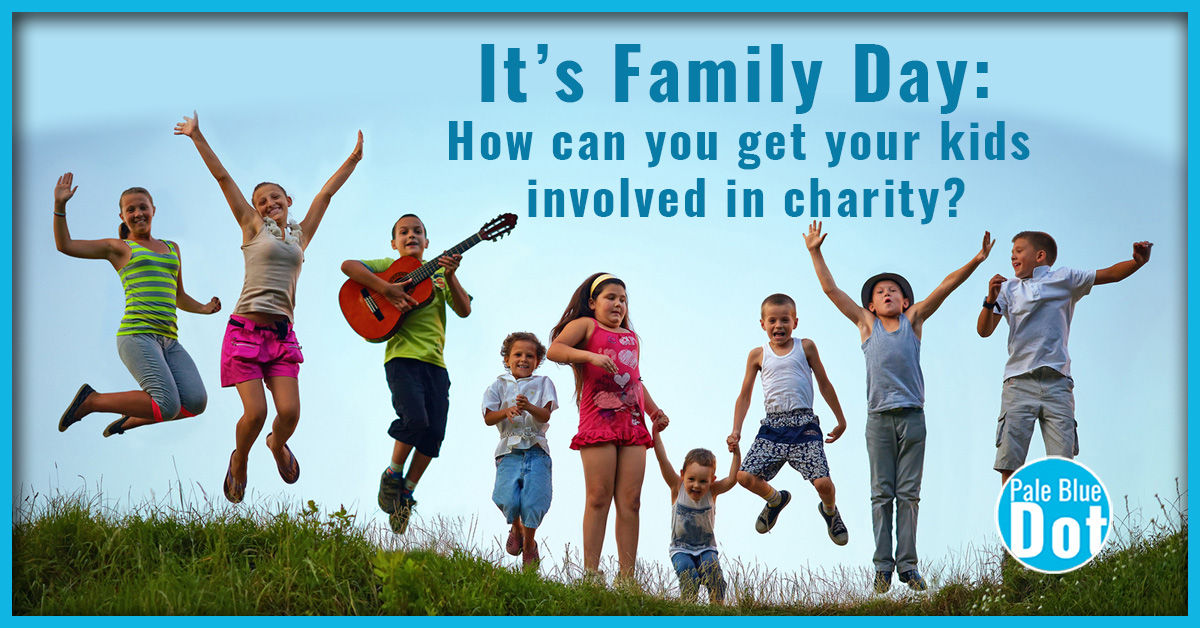“I slept and I dreamed that life is all joy. I woke and I saw that life is all service. I served and I saw that service is joy.” – Kahlil Gibran
Getting children involved in charity can take some work, but it is worth the effort. With a little bit of planning, you can introduce them to the concepts in a variety of ways. One of the most basic tricks is shifting away from donations of money. These days, in a society that is already mostly cashless, the concept of money is already more intangible that we’d like. Giving a series of numbers on a screen to a group that is far away can make charitable giving to intangible to really help young minds and hearts latch on to the idea. Instead, try approaches that involve some amount of sweat equity… it is easier to grasp things you can… well… GRASP!
Try to involve your kids in as many of the steps as possible, to help them feel a part of the whole process. When making the decision about which charity support, involve them in doing research. Discuss as a family the mission of each charity, and ask them which causes they find most appealing, and what about it strikes the chord. Take the time to explore what motivates them, and how they would like to contribute. Let your children see the money, add it up, and send it in to the charity. Celebrate the event afterwards, looking at how their efforts made the world a better place.
The more that your children can be an active part of the process, the better. Each step that they participate in makes charity much more real and tangible thing.
Why get your kids involved in charity?
By taking the time to introduce your children to charitable works, you can teach them:
- That anyone can make a difference. This is an empowering message for children, as it lets them know that they are important enough to make a positive impact;
- That sacrifice can feel good. Looking beyond ourselves and our own immediate needs helps us make connections and builds empathy;
- That responsibility is satisfying. Making and keeping a commitment to a fundraising activity, or working at a volunteer event, makes you feel strong and confident;
- That tolerance for differences in backgrounds, abilities, ages, ythniciicets, and social circumstance can teach us that as human beings we have more in common than we have differences; and
- That community service can provide valuable job skills and exposure to a variety of professional environments, to help them decide what future careers might suit them.
How can we pick something suitable?
- Speak up. Let your children see you advocating changes that you are passionate about. Help them learn to find their own voices, by taking them to a demonstration, a community meeting, or by writing a letter to a local official about a cause they feel passionate about.
- Donate:
- Clothes. As children grow, closets fill with clothes that haven’t been worn in a long time. Involve your kids in the process, letting them identify items that don’t fit any more. Have them help in laundering them one more time, so they look their best for their new owners, and helping them fold them neatly before bringing them to the Salvation Army or Goodwill. Let them help bring in the clothes themselves, so they really feel the transaction;
- Old toys. The same goes for old toys… take some time to remember the good times they had in the past, and help your children imagine those toys bringing joy to less fortunate children. Talk to your children about how fortunate they have been, and remind them that not everyone gets the same opportunities in life. Sometimes, particularly insightful children will realize that the recipients are only getting second-hand goods. If your child notices this, you can can help them explore other options like turning opportunities for getting gifts for themselves into opportunities to get brand-new supplies for the needy. School supplies, personal care items, clothes, toys… there are many organizations that would be thrilled to be able to present brand-new items to their recipients, showing them that they are worth it;
- Pet supplies. Pet shelters often appreciate gifts of dog and cat food, litter, or toys. Children who aren’t immediately inclined to help other humans are often more amenable to getting started by helping animals. Some shelters will allow your kids to spend time with the animals there, or take them for walks; or
- Food. There are many opportunities to help a food drive, but you can help your kids take it to the next level. Preparing food from scratch costs less than pre-made meals. It’s a great experiment to figure out how much a family can save by cooking food at home, and skipping eating out or eating boxed/frozen meals. Then apply those savings to buying the most-needed items for the local food bank.
- Help save a life. Take your children with you when you give blood, or to enrol as a tissue or organ donor. Talk to them about why you are doing this, and what kind of a difference it will make. There’s an added advantage… seeing you voluntarily return every eight weeks to give blood helps de-sensitize them to needles, and helps them associate the process with a beneficial activity. Some hospitals have opportunities for older children to volunteer time, which can even earn them co-op credits.
- Turn the focus of birthdays and other holidays outwards. Involve the child in the decision about what charity they would like to support, and then have all friends and family members bring items to be donated to the charity. Then make sure that when you deliver the items or funds with your child, that you record the event on camera and revise that movie or pictures at later birthdays. Let them see how they are building a legacy of charitable work;
- Pitch in. Find an activity your child can get behind. Clean up litter at a local park or roadside. Do things for the elderly or those with mobility challenges that they have trouble doing for themselves. Pick up sticks in a neighbours yard after a windstorm, mw the grass for a neighbour, rake leaves, or shovel snow.
- Find a charity event suitable to their age and abilities. Many charity events have options that even children can participate in. There are all sorts of other sites that have come up with some pretty incredible lists of ideas. Browse through some of these for ideas:
Wrap it Up
February 17th, 2020 is Family Day. Whether your family is large or small, it’s a good day to take stock of what you have, and start figuring out how to give some of those riches back to the world. Your kids can become part of your family’s philanthropy, and there’s no better time to start than now.


Leave a Reply